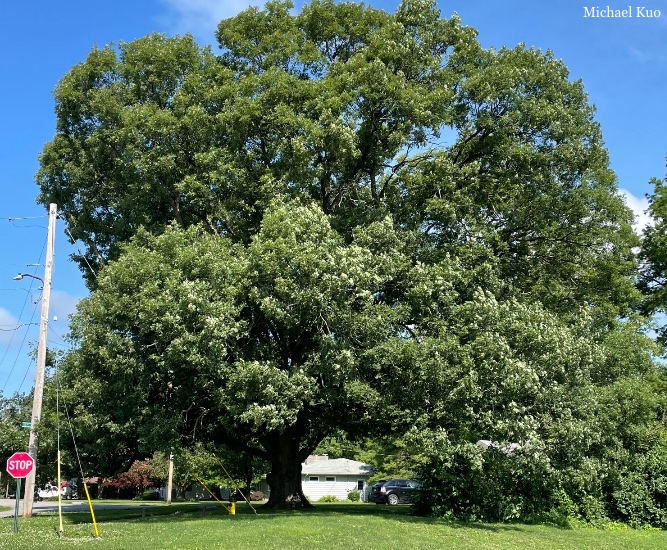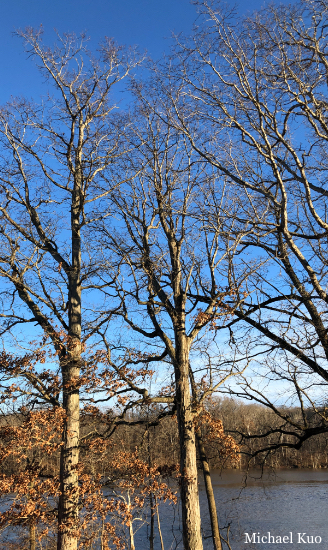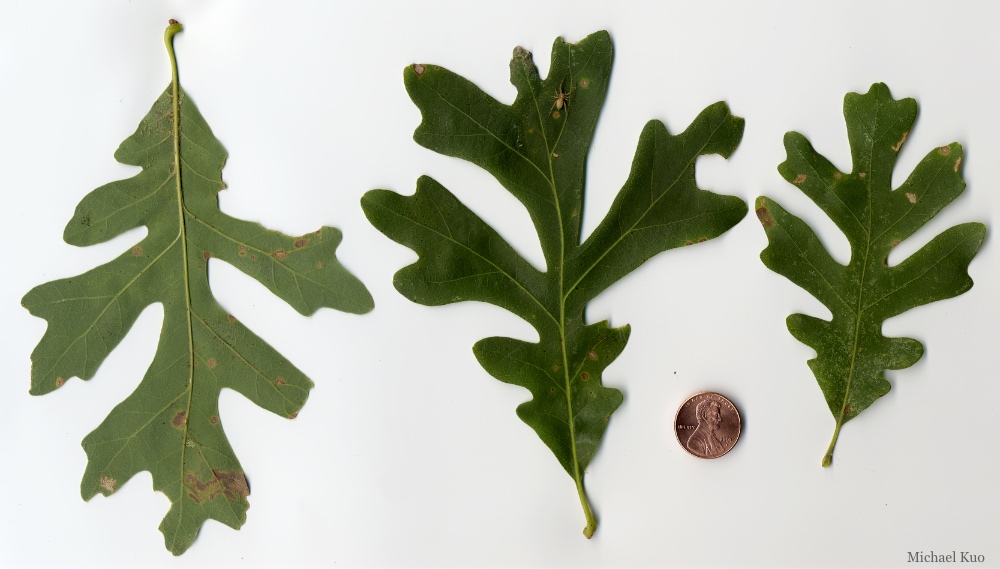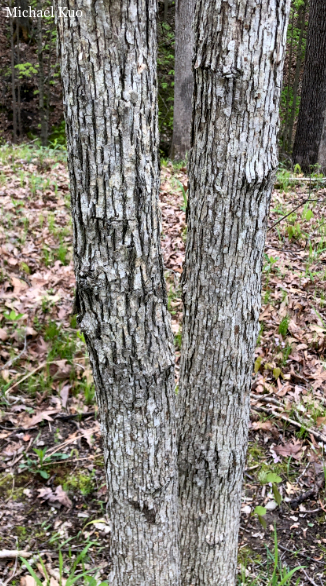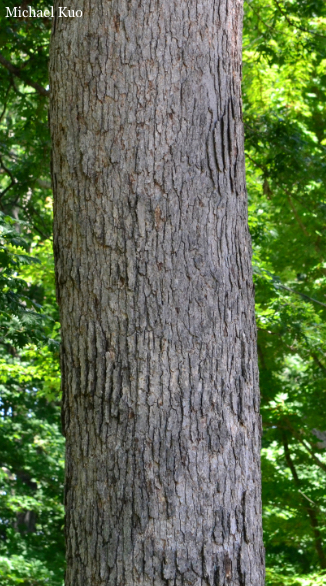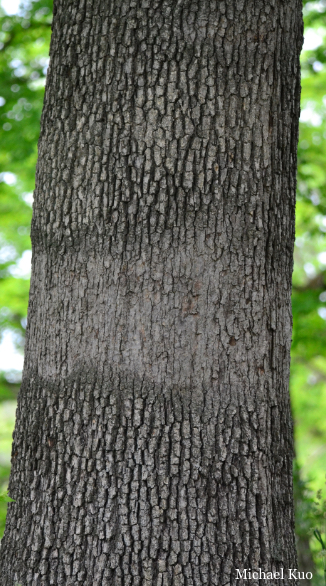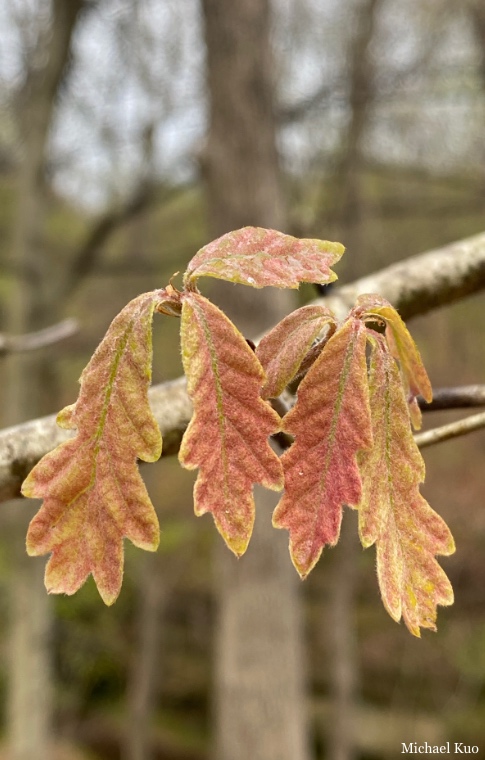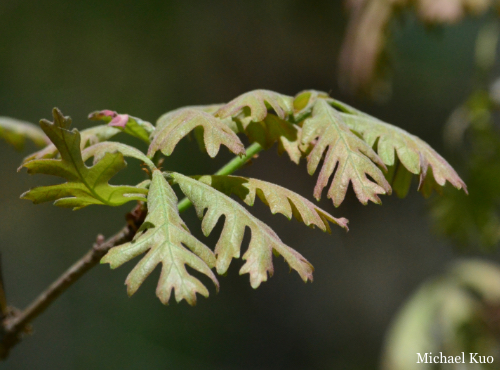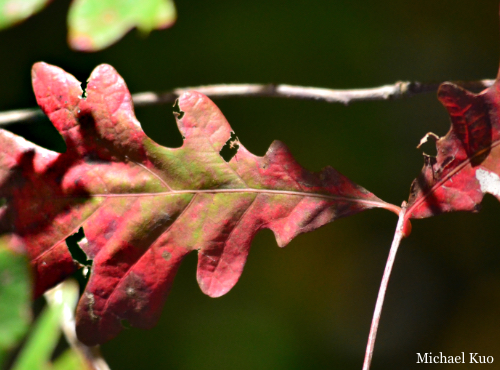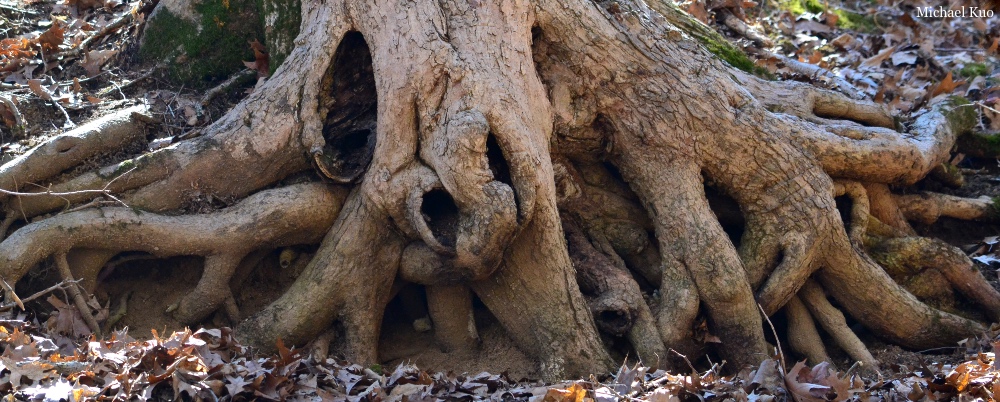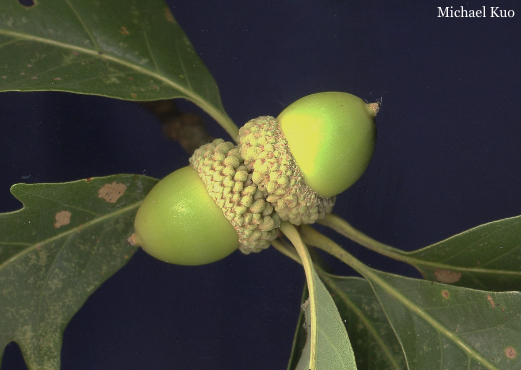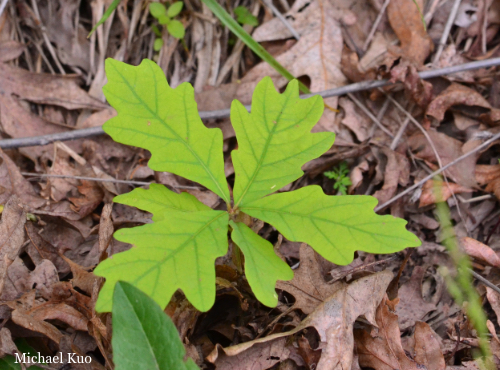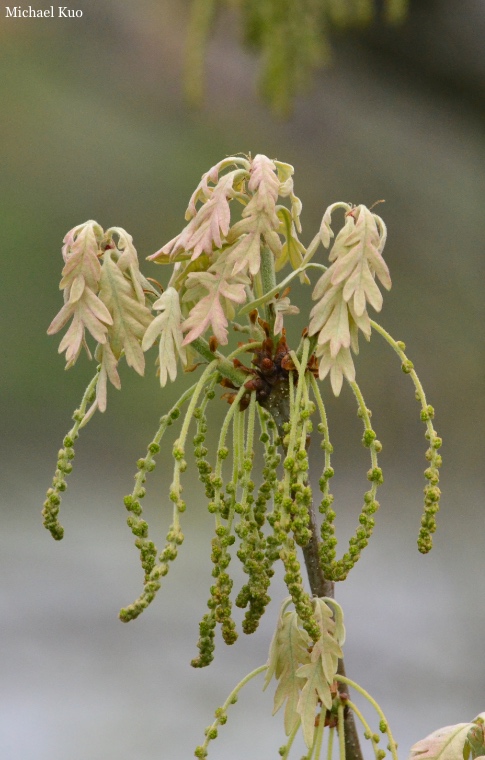 Quercus alba (white oak) |
|
Widely distributed and common in the Midwest, white oak (Quercus alba) is one of our best-known trees, with some individuals living for centuries. White oak doesn't get particularly tall (trees more than 80 feet high are rare), but with age it stretches outward in all directions, when unimpeded, and old trees are often wider than they are tall. Such trees are usually seen in urban or savannah-like settings, since forest trees must compete for space; in the woods white oaks often appear on ridges and slopes in oak-hickory ecosystems, and their lateral growth is limited. In many of the Midwest's oak-hickory forests, oaks are having difficulty regenerating. Take a look at the saplings and young trees in your favorite Midwestern oak forest: you are likely to discover that most of them are maple trees. There are many reasons for this "Oak Regeneration Problem," almost all of which are the result of past or present human behavior (see Dey 2014 for a comprehensive overview). Whether or not this bell can be un-rung is unclear; expensive and drastic forestry measures like clear-cutting and shelterwood methods are often prescribed by natural resource departments—with limited evidence of success. |
 midwestern range |
|
|
|
|
|
|
|
|
|
|
|
|
|
|
|
|
|
|
References: Harlow 1946, Peattie 1948, GN Jones 1971, Miller & Jaques 1978, Kricher & Morrison 1988, Preston 1989, RL Jones 2005, Mohlenbrock 2006, Kershaw 2007, Sibley 2009, Voss & Reznicek 2012, Dey 2014, Mohlenbrock 2014, Hilty 2021, USDA 2021. Kuo, Michael & Melissa Kuo (July, 2021). Quercus alba (white oak). Retrieved from the midwestnaturalist.com website: www.midwestnaturalist.com/quercus_alba.html All text and images © , midwestnaturalist.com. |
